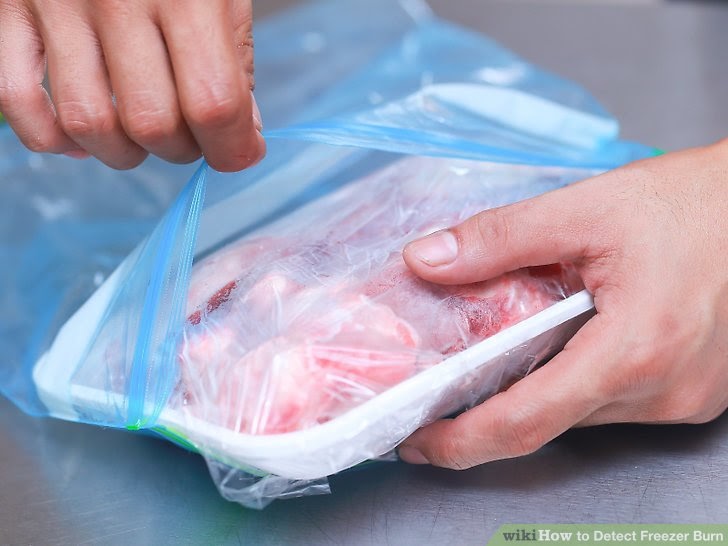
Freezer Burn: Why It Happens and Tips to Prevent It
Introduction:
Freezer burn is a common issue that occurs when food is improperly stored in the freezer. It is characterized by the formation of dry, discolored patches on the surface of frozen food, which can affect its taste, texture, and overall quality. Understanding the causes of freezer burn and implementing preventive measures can help you preserve the quality of your frozen food and reduce waste. In this comprehensive guide, we will explore why freezer burn happens and provide you with practical tips to prevent it.
What is Freezer Burn?
Freezer burn is not caused by freezing temperatures alone, but rather by the process of dehydration and oxidation. When food is exposed to air in the freezer, moisture evaporates from its surface, leading to dryness and the formation of ice crystals. These ice crystals can cause damage to the food’s cells, resulting in changes in texture, taste, and appearance.
Causes of Freezer Burn:
a. Improper Packaging: Insufficient packaging or using inappropriate containers can leave food vulnerable to freezer burn. When food is not properly sealed, air can enter and circulate around the food, accelerating the dehydration process.
b. Temperature Fluctuations: Frequent temperature fluctuations within the freezer can contribute to freezer burn. When the freezer temperature rises above the optimal freezing point, ice crystals may melt and refreeze, causing damage to the food’s texture.
c. Extended Storage Periods: The longer food remains in the freezer, the higher the likelihood of freezer burn. Over time, even well-packaged food can succumb to dehydration and oxidation.
Tips to Prevent Freezer Burn:
a. Use Proper Packaging: To prevent freezer burn, ensure that your food is tightly sealed in moisture-resistant packaging. Use high-quality freezer bags, airtight containers, or vacuum-sealing equipment to eliminate air exposure.
b. Remove Excess Air: When using freezer bags, squeeze out as much air as possible before sealing them. This reduces the chances of moisture evaporation and ice crystal formation.
c. Double Wrap: For extra protection, consider double-wrapping your food. Place the food in a freezer bag or airtight container, and then wrap it with aluminum foil or freezer paper to create an additional barrier against air and moisture.
d. Label and Rotate: Proper organization is essential in preventing freezer burn. Label your frozen food with the date of storage to ensure that older items are used first. This practice helps prevent prolonged storage periods and reduces the risk of freezer burn.
e. Optimal Freezer Conditions: Maintain your freezer at a consistent temperature of 0°F (-18°C) or below. Avoid opening the freezer door unnecessarily, as it can cause temperature fluctuations. Additionally, ensure proper airflow within the freezer by not overcrowding it with too many items.
f. Freeze Fresh Food Quickly: To preserve the quality of fresh food, freeze it as quickly as possible. Rapid freezing reduces the formation of large ice crystals, which can damage the food’s texture and contribute to freezer burn.
g. Avoid Freezing Foods Past Their Prime: Food that is already close to its expiration date or has been stored for an extended period is more susceptible to freezer burn. Whenever possible, freeze food when it is at its freshest to maintain optimal quality.
h. Proper Thawing: When thawing frozen food, do so in the refrigerator rather than at room temperature. Slow, controlled thawing helps retain moisture and minimizes the risk of freezer burn.
Conclusion:
Freezer burn is a common issue that affects the quality of frozen food. By understanding the causes and implementing preventive measures, you can significantly reduce the occurrence of freezer burn and ensure that your frozen food retains its flavor, texture, and nutritional value. Proper packaging, maintaining optimal freezer conditions, and adhering to storage guidelines will help you preserve the quality of your frozen food and minimize waste. With these tips in mind, you can enjoy the convenience of frozen food without compromising its taste and texture.
- Comprehensive Review of the Best CBD Oils By Canna Flower - September 13, 2024
- Cloud Chasing with Goat Disposable Vape: A Flavorful Adventure - October 10, 2023
- Freezer Burn: Why It Happens and Tips to Prevent It - July 12, 2023


